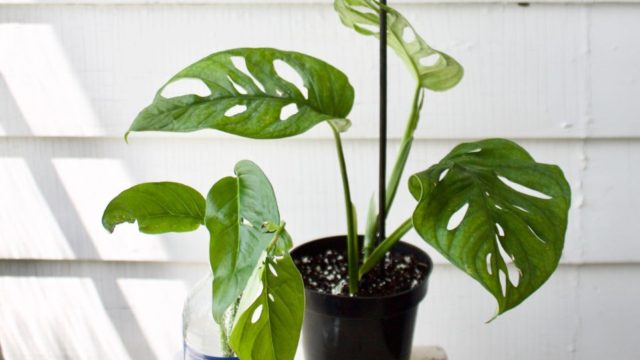
Obsessed with this viney sister to the Deliciosa? Me too. While my Monstera deliciosa post remains the most popular on my blog, I wanted to do another post on the Monstera adansonii.
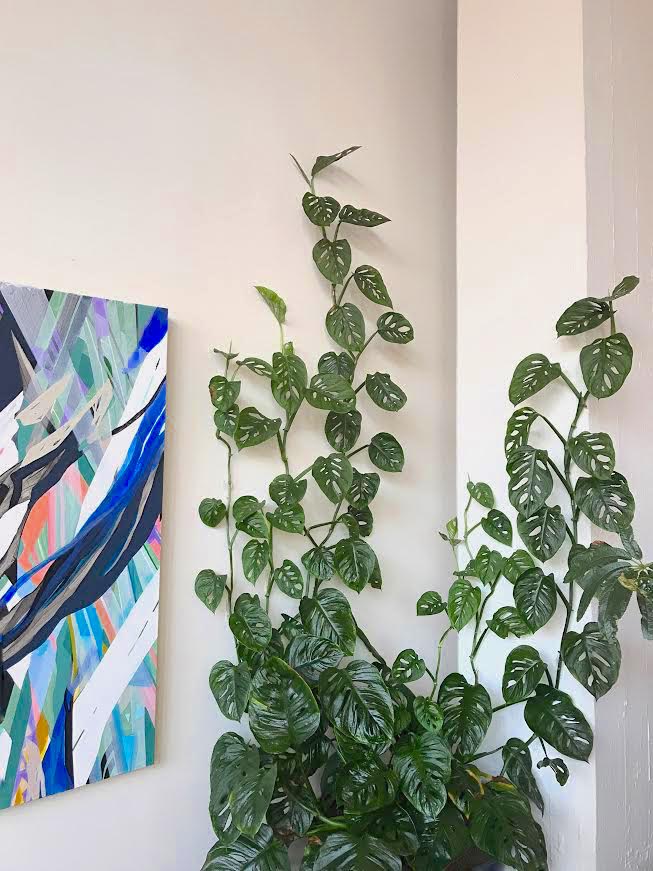
First off – how do you pronounce Monstera adansonii? Glad you asked – it’s Mon-stair-ah Ah-don-so-nee-eye. It’s not so bad.
Second, there is some confusion on these Monstera vines, so let’s clear a few things up:
Is there a difference between monstera adansonii and monstera friedrichsthalii? The short answer is no, they’re the same plant and are also called a swiss cheese plant. But then why do so many adansonii look different? Here’s the kicker: There are two versions of the plant, young and adult.
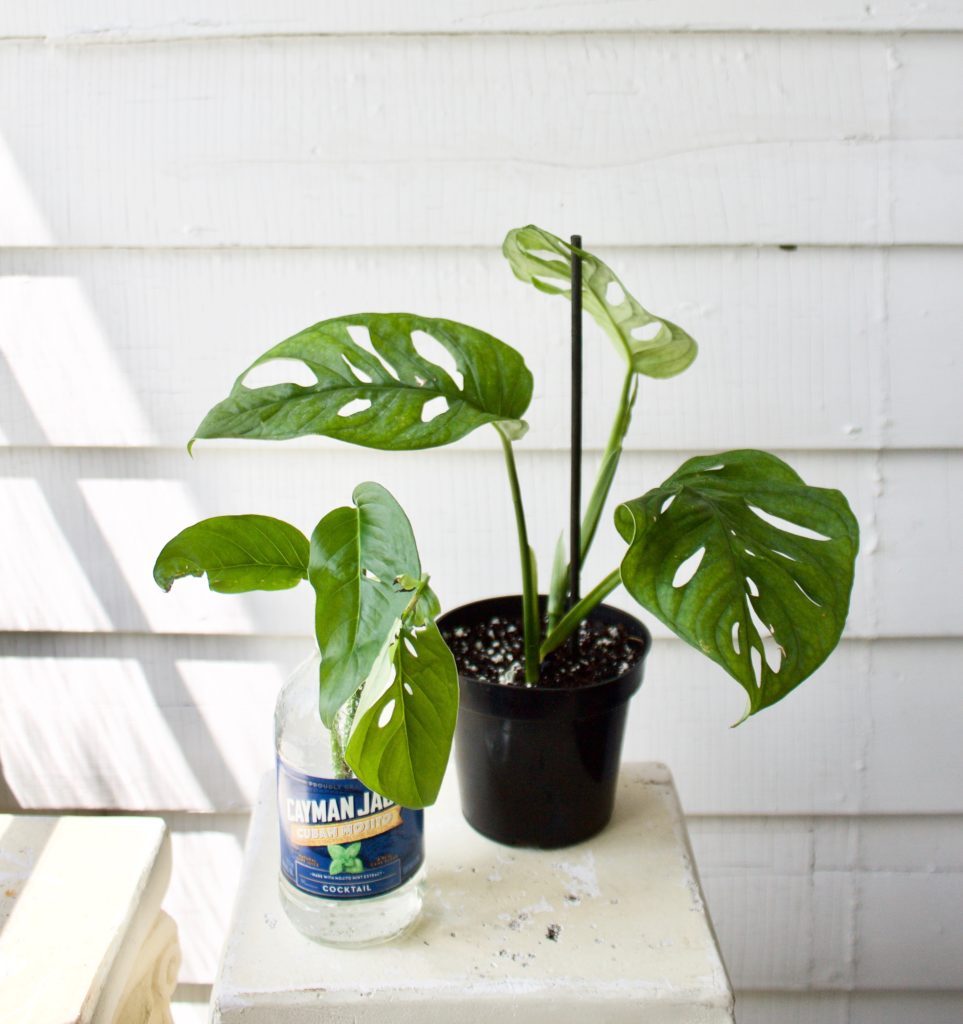
Aesthetically, young adansonii have less large holes (which are called fenestrations) and slim teadrop leaves with a smoother look. See below.
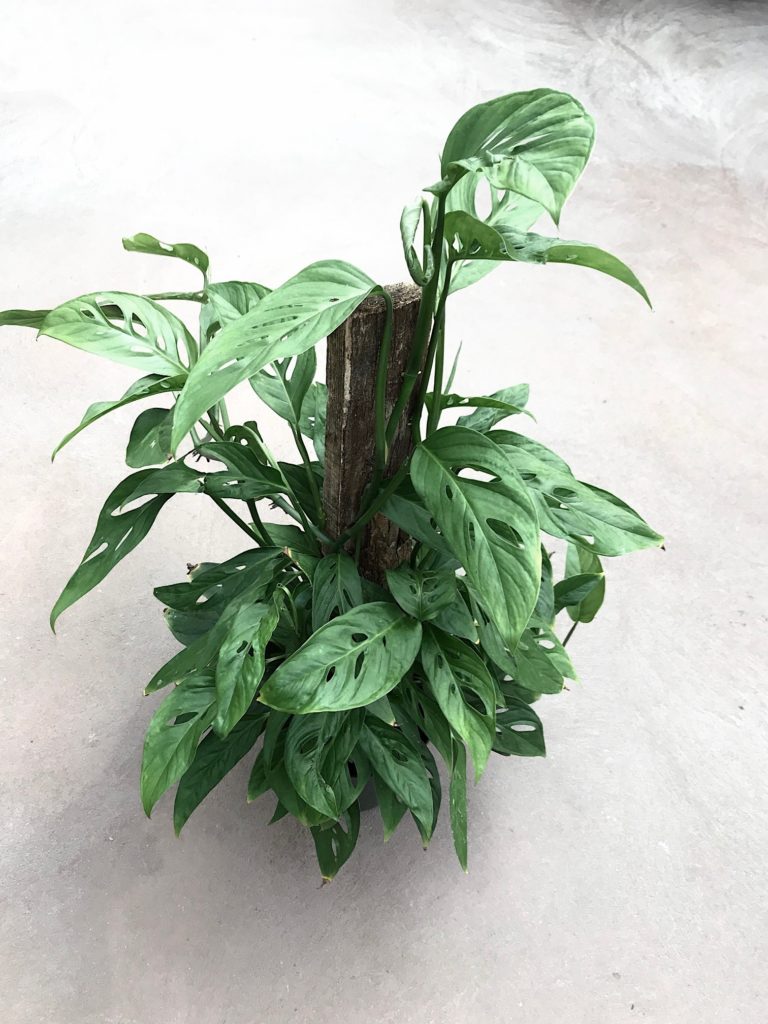
Adult adansonii (these are what are typically called friedrichsthalii) have much bigger fenestrations and wrinkly heart shaped leaves that look like reptile skin.
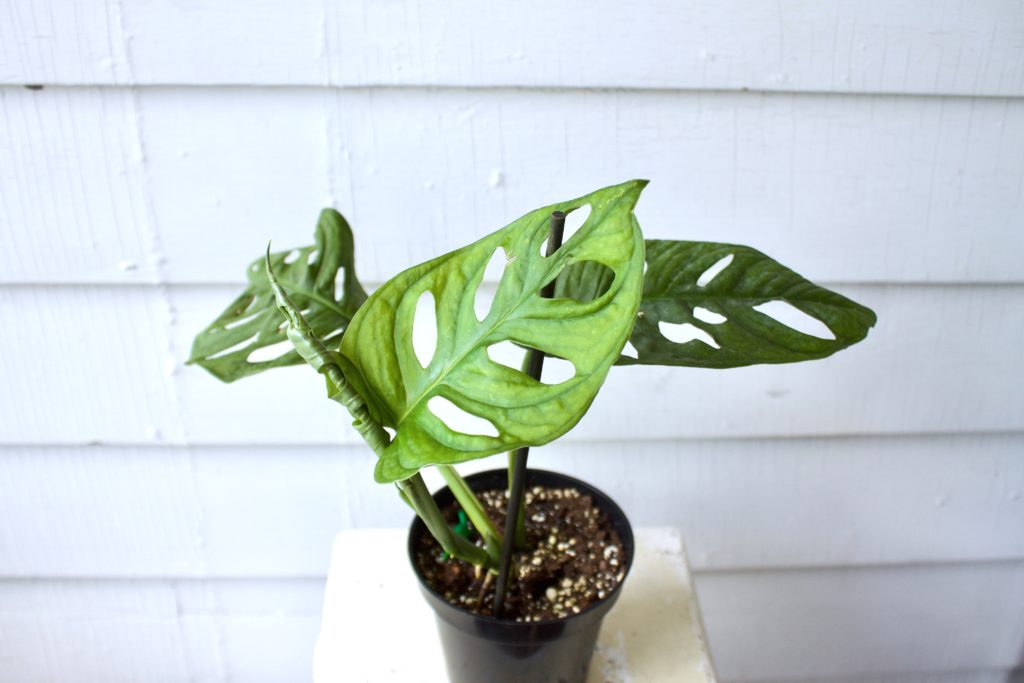
How about obliqua? Is there a difference between monstera adansonii an monstera obiqua? Oh lawd there is. This blog post does a great job of going into detail about these two, but the short answer is yes. The obliqua is an extremely rare boy and looks almost skeletal. The leaves are very thin and are 80% holes – it is almost impossible to find one of these anywhere. The adonsonii is more leaf than hole and looks like a slightly different plant. If you see monstera adansonii listed as an obliqua it’s probably not real and it’s just listed as such for views. Don’t fall into the trap.
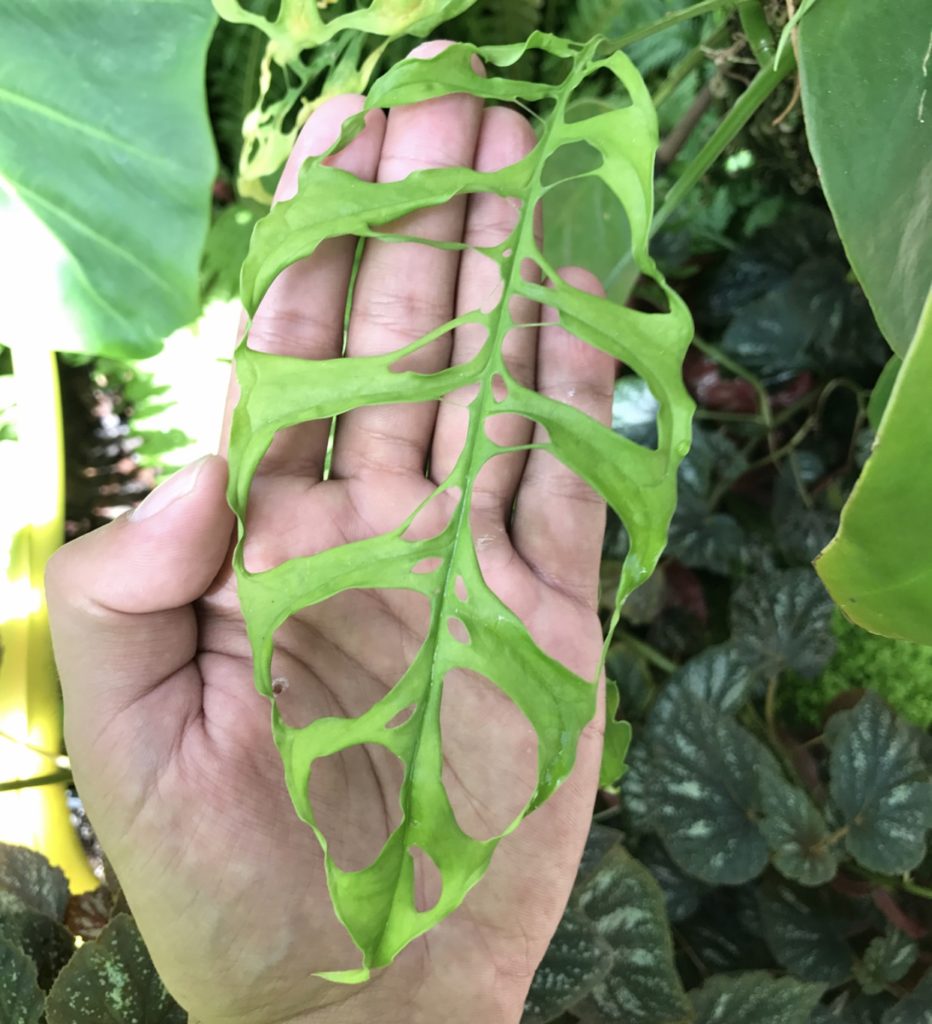
Basic Care
Light: I keep my monsteras, including Monty, in indirect light and they do just peachy. My adonsonii prefer less sun but a warm environment, so I keep these guys amongst other plants, near an east window shielded by peperomia.
Growing pattern: Possibly the best thing about monstera adansonii is that they’re climbers. And trailers. And hangers. They have grabby roots (see below) that stick onto anything, making it easy to train them to grow on a wall or up a moss pole.
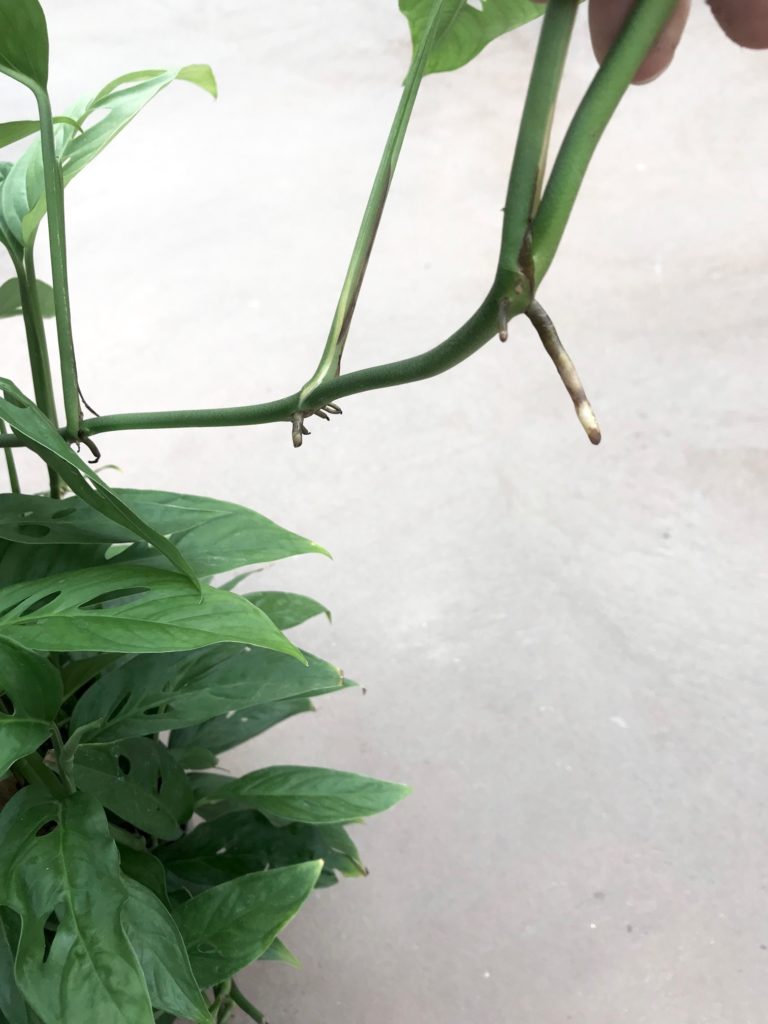
Temperature: Monsteras don’t particularly like drafts but they will tolerate them begrudgingly. They do best between 60 to 95 degrees Fahrenheit.
Watering: Monsteras aren’t keen on soggy bottoms, so letting them dry out between waterings is key. If watering is not your forte, they tend to do better on the dry side than wet and you should probably definitely get one of these.
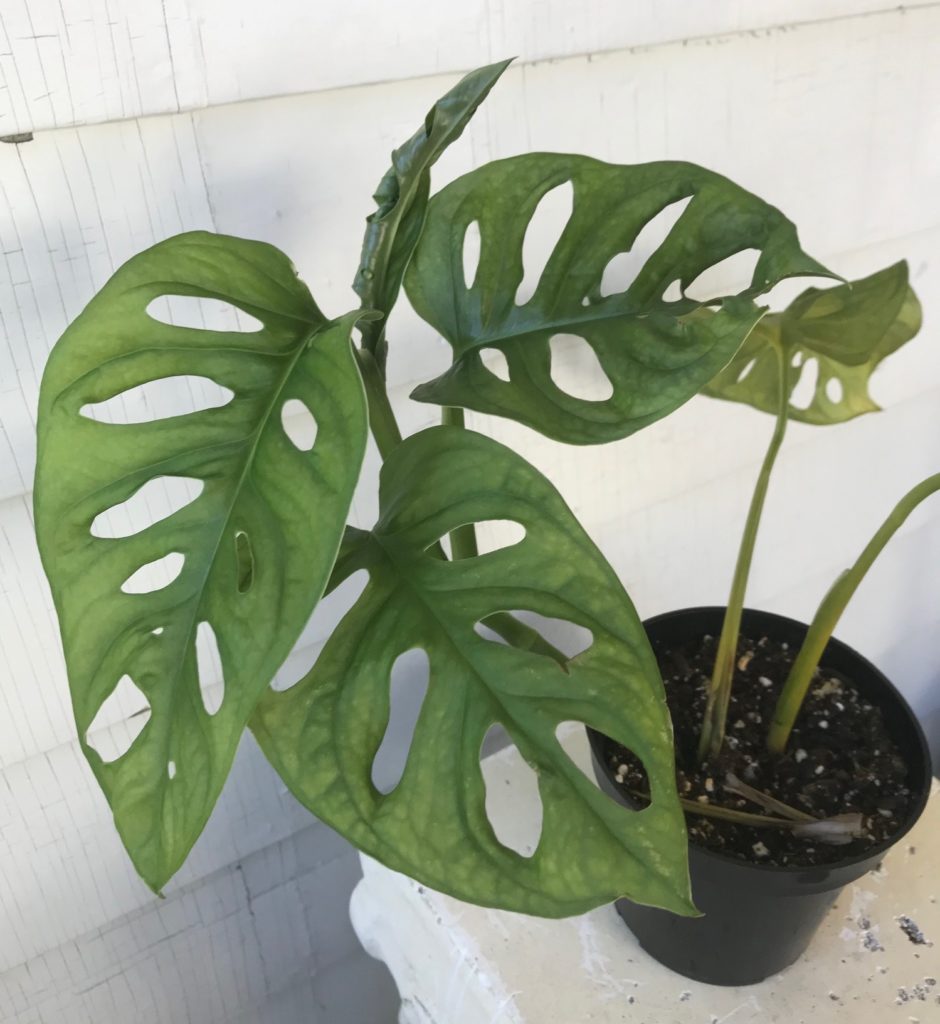
Are Monstera adansonii safe for cats or dogs?
Nope, not technically, as they are part of the Araceae family, home to all philodendrons and aroids. Like Monstera deliciosa, I have never had an issue with my cats interested in eating them at all, but these should be kept out of reach of more curious or spiteful fur children.
Common Monstera Problems
I never had any pests vs monsteras episodes until this summer, which was crazy hot. Monty Jr. got a case of spidermites and my adansonii came in the mail with thrips so now I’m a pest expert when it comes to monsteras. Oy.
If you see yellow leaves: Your monstera adansonii is probably being overwatered or watered inconsistently. Also be sure they are not in super direct sun, these typically grow under larger trees in their native land.
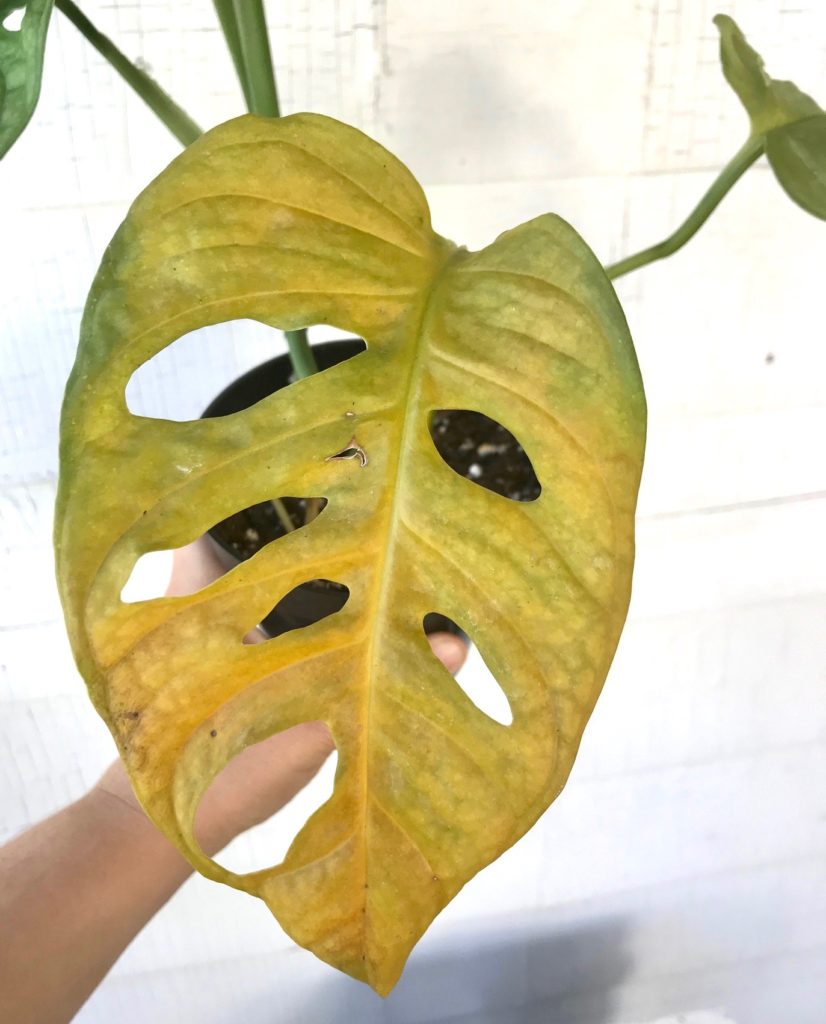
There’s a metallic sheen or dulling on the leaves: Probably spidermites or thrips, both of which are the worst. To combat, spray your plant babes with a hose to get all bugs off the leaves. I used this insecticide (I never used to use one but drastic times call for something equivalent to a blowtorch) which has neem oil. Apply as instructed on the bottle and remove any very damaged leaves.
Oh no, there’s gnats in the soil: Probably monstera root rot, which happens when your monstera sits in a wet soil diaper too long. Repot the plant in new soil and check roots, remove anything smelly, soggy or mushy. Replant in fresh soil and water it, place in a warm location.
Ugh, there’s dry tips and edges on the leaves: Monsteras like a bit of humidity, and not harsh direct sun. If you see slight browning on the edges, that’s a sign he needs a bit more moisture. I actually have a humidifier running near my monsteras every fall and winter and have never seen a dry edge.
Leaves are folded or shriveled: Soil is too dry – take a soil moisture test with that moisture meter you bought and water until it flows from the bottom. Drain throughly. Never let any monstera (or plant for that matter) sit in standing water.
Pruning and Repotting
Repotting time can be tricky, but monstera adansonii prefer to be snuggly than swimming in a giant pot. A hint to repot is when roots are coming out of the bottom of the pot or the plant is quite tall.
Monsteras loooovvvveee being pruned. It allows them to be a bit bushier and pops out better growth. My adansonii is still young, but I would think about pruning every 6 months to keep plants looking full. These guys are rapid growers if they like you, so pruning can be necessary. Plus pruning = propagation! Which is fun for making more baby plants. My basic Monstera propagation post will work just fine as propagating monstera adansonii follows the same idea. See one of my new babes below.

Do you have your monstera trailing, climbing or hanging? Have you propagated one? Leave a comment below!
*This post contains affiliate links where L&P does receive a portion of sales. It also contains awesome instagram people who are just awesome and I want you to know about them.

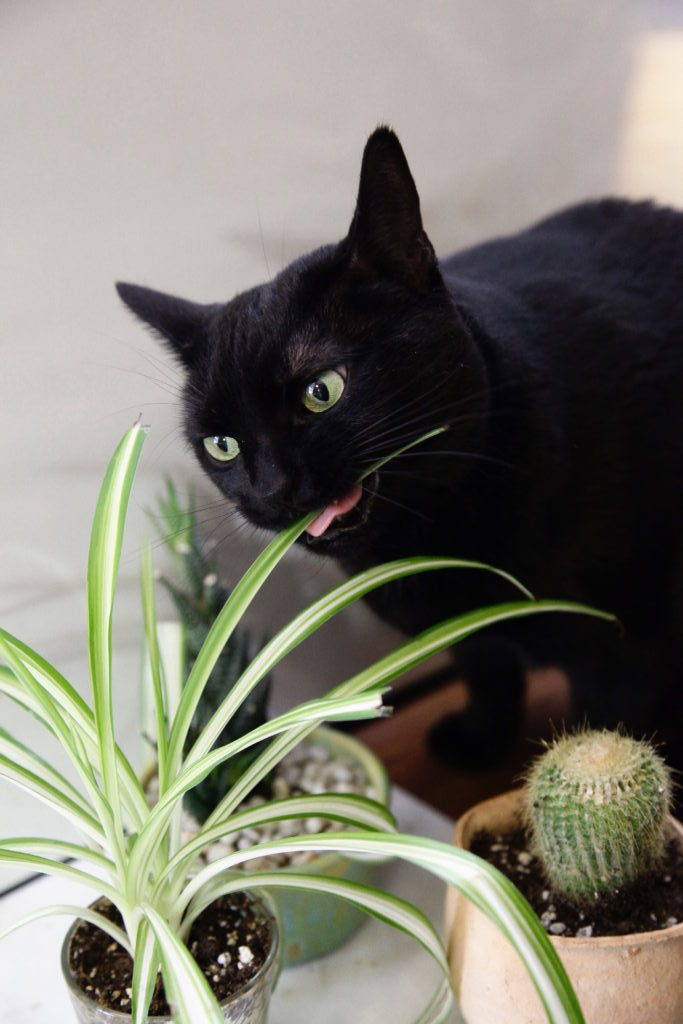
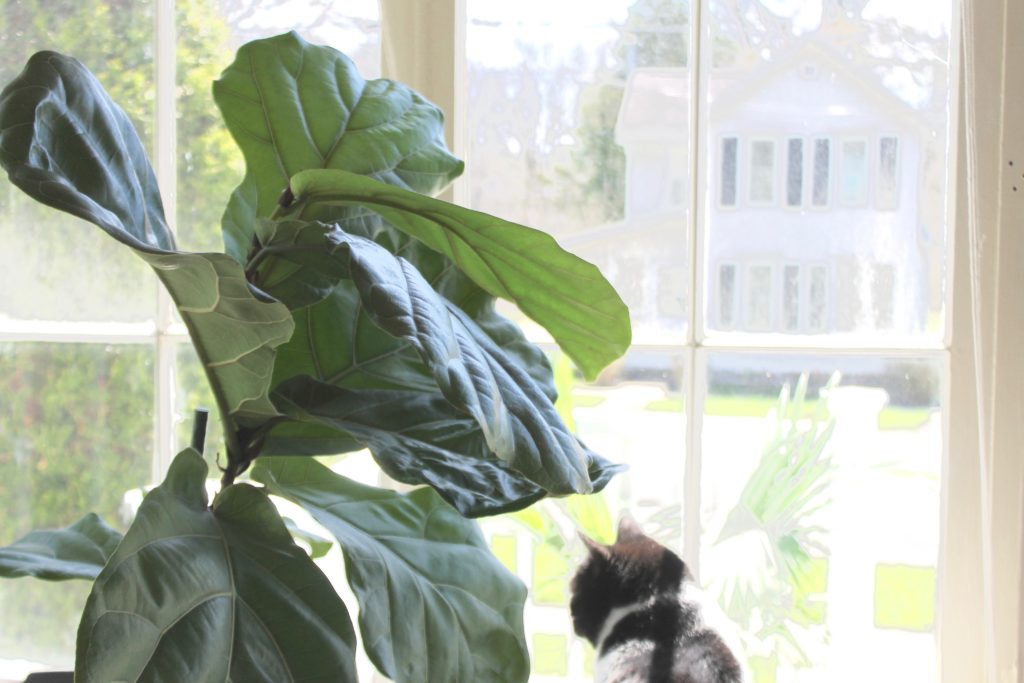
The difference between obliqua and adansonii? At least a couple of grand! My dream is a variegated adansonii, but I don’t think I could deal with the pressure
Obliqua is less common, even in the wild. Adansonii’s leaf is thicker and with less holes.
Your plant looks beautiful! I just got one myself, and I’d love to train it to climb up the walls like that. How did you manage it? Does it damage the walls?
Hi Clare, they won’t damage the walls at all. Use command strips and hooks to train the vines, you just have to be careful not to stretch the vine too much. Also a moss pole is great for adansonii too!
Hello! I was hoping you could help. I have a young adansonii, gifted to me. It was a one leaf stem cutting (“mother leaf”) and has grown 2 new leaves in a short while. However, the mother leaf turned yellow and wilted and so has the baby stem of the supposedly 4th leaf. 🙁 The first two leaves seem healthy but I’m not sure if new leaves will still sprout.
Do I need to repot / replant it? I’d love to see it grow. 🙁 I also sent a photo on your FB page if that’s any help. Thank you for you time. 🙂
Got it Aien! I’ll respond on Leaf and paw’s facebook page.
Hi there. I have a young adansonii also – when she arrived one of her leaves were broken so it is semi attached however doesn’t stand up like the rest. Should I take this leaf off?
Hi Laura, yes, I would remove the leaf.
Hey! I’ve had my monstera for a few months and it was growing well but lately it’s been growing long leggy vines without any leaves, the rest of the plant seems healthy. Do you have any suggestions? Thank you!
Hi Yoshimi, Hmmm, can it possibly need more light? Also, sometimes depending on where you live, Monsteras grow slower in colder weather. Maybe a photo would help so I can see? Feel free to send me a photo on IG or FB and I should be able help more.
Hi. I have an Andansonii with a long trail that has no leaves along the middle but some leaves at its end. Should I cut it off and try to propagate the healthy end?
And then, once rooted, would it be best to plant it the same pot as the adult to get a thicker looking plant.
First time with an Andansonii… X Lin
Hi Linda, I would. I would cut where the leaves start to thin out, and you should be good to propagate in water. They propagate very easily. Good luck.
I need help! I’ve had this plant for 5 months now and it was growing INCREDIBLY FAST. However, this last month I noticed that the two main vines are continuing to grow and look like they are going to put out a new leaf, but only create a node and then move on to the next. I’m so confused and have searched everywhere online but have only been able to find people asking the same question with no answers. Any ideas are appreciated! Thanks!
I just read a couple comments that seem to be having a similar issue! I jumped the gun on commenting before reading, sorry. It’s just so strange because the environment has t changed at all.
Hi Karli! I would cut them back, giving it a good pruning. Your plant might be pot bound, a sign is usually weak new leaves. Prune a good chunk off (you can follow my monstera prop turtorial, these plants are similar, and you can propagate those pieces in water. The mother plant should push out better growth after that. Also, do a quick root check and see if it’s pot bound. A tight root system is a hint it is and you can repot in something very slightly bigger.
My monstera adansoni is putting out super small leaves that are pretty far apart. I repotted it like 4-5 months ago and water it once a week. It has decent light so I’m just not sure what’s up. 🙁 Any suggestions?
Hi Kat! It could need more water – if monsteras are in very high light and are dried out, they won’t produce large leaves, the key is keeping them ever so slightly moist but not wet. It could also be spider mites – mine just recovered from spider mites and all of the leaves it put out during the infected time were small, far apart and sad, so you may want to check for pitted leaves and webbing underneath the leaves.
My swiss cheese plant is growing well but the leaves only have like one hole each. I suspect it’s a young plant. When would i be able to expect bigger holes and a more mature plant? Do they mature after a couple years? Five years? I have no idea. Will the current small leave grow bigger eventually with more fenestration or will they fall off?
Current one-hole leaves will not develop more fenestrations, no. Only more mature leaves do and will grow bigger. As far as when holes will develop, that totally depends on the the age of the plant but if it is at one hole, and you keep your plant happy now, I would say (based on experience) that you should see some holier leaves by next year.
Mine is growing up a wooden pole and when I cut it to stimulate more growth, all the new leaves that grew from the new shoot had zero fenestrations which is really stressing me out. I have it facing a window and I think my watering isn’t the problem. I need help
Hi! That’s totally normal, it takes a couple leaves to pop out before it generates larger ones. Also, be sure you aren’t overwatering – only water when dry and keep the plant in a warm, bright location.
Mine is growing tall and I love it but a few leaves fell off at the bottom , so basically it’s empty down there , can you advice please ?
Hi Shoma, This can happen if there’s inconsistent watering or if the plant is moved around. I would be sure it doesn’t dry out too much and keep this in bright indirect light. New leaves should start popping up where the other have fallen off.
Hi – I have an adonsanii that I’ve owned for a few years – it grew beautifully for a while, but now just seems to be growing underground roots (he went from 4″ > 6″ > 10″ pots becuase that’s what i had), and not any new leaves – and when it does they are small, and leggy (which I trim). light problem maybe?
Hi! So if you just repotted, small leaves are normal, and if you keep trimming them you aren’t really helping the plant. I would definitely not repot again – plus adonasonii like to be somewhat rootbound – and place in a semi-bright location that is warm. Light should be bright but not direct. In the meantime, make sure the pot isn’t too big for the plant and be careful to not overwater. It just sounds like the plant is trying to grow but constant snipping might be hindering it.
Obliqua is hard to find but it is entirely doable. I know a few private growers who stock them. I see one a month for sale on plant fb groups. I think this blogs line “don’t fall for it, it’s a trap” is well crap. Very easy to see the differences in each plant and they do exist. Also I’ve seen obliqua’s in the 400-500$ range. Variegated Adansonii can run you 2500 for a teen! So …. there are even more types as well. Adansonii has a wide and narrow form, onliqua, Esqueleto, laniata and more.
Nekem ez a növényem, minél több levelet hoz annál kissebb levelei vannak, miért?
Hiya, your plant is beautiful! Mine is growing really well lots of nice big new leaves but so many of the older leaves are going yellow and falling off. I don’t know what to do!
Hi Connie! That is normal and happens to my adansonii, and frankly all monsteras. Be sure you aren’t’ overwatering or there isn’t any sitting water in the pot. If the new leaves are big and healthy that’s a good sign, but check the bottom half for any excess moisture and change your watering as needed. Hope that helps!